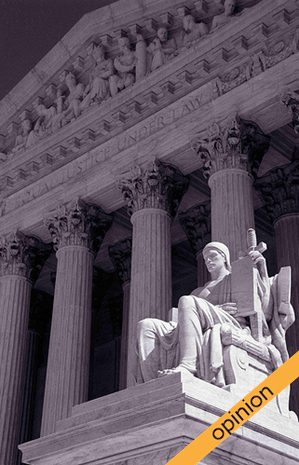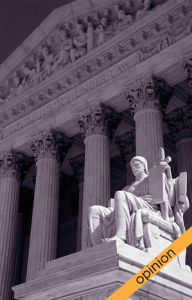Latino Voters Need Section 5 Today More Than Ever

 By Nina Perales, Vice President of Litigation for MALDEF
By Nina Perales, Vice President of Litigation for MALDEF
In the 2012 general election, an estimated ten percent of votes were cast by Latinos. The record high number was accompanied by media commentary expressing surprise at the strength of the Latino vote. Of course Latino voters did not “awaken” last year. In the slow and steady march towards increased political participation, Latinos have fought to overcome laws aimed at preventing them from voting and reducing the strength of their vote.
 Throughout this process, Section 5 has played a central role in protecting Latino voters from the backsliding and gamesmanship that characterize the voting laws of many jurisdictions in which Latinos live. The decision this Term in Shelby County, Alabama v. Holder will be critical to the ability of the growing Latino electorate to participate on an “equal basis in the government under which they live.”
Throughout this process, Section 5 has played a central role in protecting Latino voters from the backsliding and gamesmanship that characterize the voting laws of many jurisdictions in which Latinos live. The decision this Term in Shelby County, Alabama v. Holder will be critical to the ability of the growing Latino electorate to participate on an “equal basis in the government under which they live.”
Congress expanded Section 5 of the Act in 1975 to address voting discrimination against Latinos living in portions of the Southwest. As an amicus brief filed by Latino organizations in the Shelby County case recounts, racial discrimination against Latinos in the Southwest was persistent and severe. Beginning in the nineteenth century, in Texas and Arizona, Latinos suffered widespread displacement from their land and were forced to attend segregated schools, excluded from voting and jury service, relegated into low-wage work, and disproportionately convicted and punished by the justice system as well as by vigilantes. Latinos were lynched by Anglo mobs without the benefit of trial or representation and, in Texas, many lynchings of Mexican Americans were carried out by the Texas Rangers, a state police force, and their deputized civilians. Public schools, parks, restaurants, and theaters in Arizona and Texas remained segregated for Latinos well into the twentieth century.
Arizona adopted an English literacy test for voting in 1912, the year it became a state, and used the law, along with requirements for minimum education, local property ownership, and minimum periods of residency to disenfranchise the state’s Mexican American voters. Organized racial intimidation at the polls, including Operation Eagle Eye, operated into the 1960s to exclude many Arizona Latinos from voting. When Congress banned literacy tests in 1970, Arizona challenged the law and lost in Oregon v. Mitchell. In every redistricting cycle since its coverage in 1975, one or more of Arizona’s statewide redistricting plans have been blocked by Section 5 because of discrimination against minority voters.
In Texas, practices such as the White Man’s Primary, the poll tax, annual registration requirements, and the outright refusal of election officials to register Mexican Americans worked together to prevent Mexican Americans from voting. Texas perfected the art of electoral gamesmanship, enacting new discriminatory laws to replace the laws struck down in litigation. When Texas sued unsuccessfully to challenge its coverage under Section 5, the U.S. Supreme Court noted in Briscoe v. Bell that Congress had found “’overwhelming evidence’ showing the ingenuity and prevalence of discriminatory practices” against Mexican Americans.
Shortly before the expansion of Section 5 to Texas, the Court in White v. Regesterinvalidated Texas’s state House redistricting plan because it “invidiously excluded Mexican-Americans from effective participation in political life.” In every redistricting cycle following White, at least one of Texas’s statewide redistricting plans has been blocked by the courts because of discrimination against Latino voters. In three of these four cases, the preclearance requirement of Section 5 prevented the discriminatory redistricting plans from going into effect. Since 1975, Section 5 has worked to block more than two hundred changes in election procedures that discriminated against minority voters in Texas.
Today, Texas continues to respond to the growth in its Latino population by enacting new laws to dilute the Latino vote. Following release of the 2010 Census, and the news that Latino population growth was largely responsible for the state’s gain of four new seats in Congress, the Texas legislature enacted redistricting plans that meticulously fractured the Latino population across districts so that Latinos would not gain an opportunity to elect additional representatives.
This sophisticated project of racial gerrymandering included changes to Congressional District (“CD”) 23. Only five years earlier, the Court declared inLULAC v. Perry that Texas’s changes to that district in its 2003 Congressional redistricting plan bore “the mark of intentional discrimination” against Latino voters. Thus, in 2006 Texas was forced to accept a court-drawn remedial map for CD 23, but it seized the first opportunity after the 2010 Census to redraw the district to prevent Latino voters from electing their candidate of choice.
In 2011, while he was drawing CD 23 on the State’s sophisticated computer software, the legislature’s chief Congressional mapper “swapped out” precincts where Latino registered voters were more likely to turn out to vote and “swapped in” precincts with lower Latino turnout. Although the benchmark CD 23 wasoverpopulated by approximately 149,000 and needed to release population to meet the new ideal, Texas redistricters shifted more than 600,000 people into and out of the district.
An email exchange between lawyers for the Texas House Speaker who were working on the redistricting plans stated that the goal of changes to CD 23 was to “help pull the district’s Total Hispanic Pop[ulation] and Hispanic CVAPs up to majority status, but leave the Spanish Surname [Registered Voter] and [turnout numbers] the lowest,” which would be “especially valuable in shoring up” the non-Latino preferred candidate.
In the Section 5 lawsuit filed by Texas to preclear its redistricting plans, the expert witness for Texas testified that with respect to CD 23 “[t]here are some obvious parallels between what happened previously and what happened this time” and “we feel like we are all having déjà vu[.]” Ultimately, the U.S. District Court for the District of Columbia in Texas v. United States denied Section 5 preclearance to Texas’s redistricting plans for the state House of Representatives, Senate, and U.S. Congress on the grounds that the plans reduced minority political strength and that the Congressional and Senate plans were purposefully discriminatory on the basis of race. Section 5 worked exactly as it is intended – to block new laws intended to perpetuate old-fashioned racial discrimination.
The 2011 redistricting was not an outlier for the Texas Legislature. That same year, Texas tightened the state’s existing voter identification law to exclude voter registration cards, state-issued employee IDs, and student ID cards as acceptable ID for voters. Lawmakers consistently drew the connection between voter fraud and the state’s non-citizen population, seventy-nine percent of which is Latino, going so far as to claim that the presence of Spanish-speaking voters at the polls proved that non-citizens were voting fraudulently. After concluding that the new Texas voter ID law would have a racially disparate impact on minority voters, the U.S. District Court for the District of Columbia in Texas v. Holder denied preclearance of the Texas voter ID law under section 5.
Gamesmanship and purposeful vote dilution is not limited to large-scale election changes. The City of Seguin, Texas provides a notable example of how jurisdictions use political gamesmanship to thwart growing Latino political influence. Latino plaintiffs sued Seguin successfully in 1978 for failing to redistrictand then for failing to preclear its redistricting plan under Section 5. Following these victories, Seguin refused to redistrict after the 1980 and 1990 Census. By 1993, sixty percent of the city was minority, but only three of nine city council members were Latino. Latino plaintiffs sued again and won a settlement in 1994 from the city that created eight single-member districts.
After the 2000 Census, Seguin redistricted but fractured the city’s Latino population across the districts to preserve the incumbency of an Anglo councilmember and thus maintain a majority of Anglos on the City Council. When the DOJ expressed concerns in the preclearance process, Seguin corrected the violation but immediately closed its candidate filing period so that no Latino candidate would have the opportunity to challenge the Anglo incumbent in the new Latino-majority district. Latino plaintiffs sued once again, securing an injunction under Section 5. The parties settled after negotiating a new election date, and in the subsequent election a majority of the seats on the Seguin City Council were filled by Latinos.
Today in Texas, Latino citizen voter registration lags twenty-nine percentage points behind Anglos. Persistent racially polarized voting makes it difficult for Latinos to elect their candidates of choice, particularly when Texas jurisdictions continue to dilute Latino votes through gerrymandering and restrictive voting practices. There is simply no question that Section 5 serves a critical role in protecting Latino voters from current, purposeful attempts to deny Latinos the right to vote.
The U.S. Supreme Court’s long history of involvement in cases seeking to ensure equal rights of U.S. Latinos provides an important foundation for the Court’s consideration of Section 5 in Shelby County. Having intervened as recently as 2006 to defend Latino voters against racial discrimination, the Court knows well the tendency of certain jurisdictions, large and small, to respond to increased minority voting strength by enacting new laws intended to limit or reduce the minority vote. Weakening Section 5 leaves enforcement to under-resourced private litigants who cannot match the ability of the U.S. Department of Justice and the U.S. District Court for the District of Columbia to identify and stop discriminatory election practices. Section 5 is tailored to meet the challenge of persistent discrimination in a way that preserves minority voting rights and the integrity of America’s election system.
This article was first published in SCOTUSblog.
Nina Perales is Vice President of Litigation for MALDEF, the Mexican American Legal Defense and Educational Fund. Her litigation has included successful statewide redistricting cases in Texas and Arizona as well as LULAC v. Perry, a challenge to Texas congressional redistricting on behalf of Latino voters which Ms. Perales led through trial and argued successfully in the U.S. Supreme Court.
[Photo by David Paul Ohmer]
